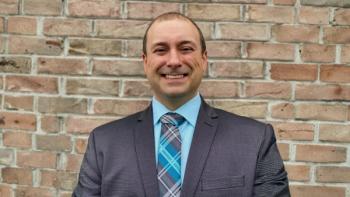
Move Beyond Dispensing With Automated Pharmacy Workflows
Burnout is not a new phenomenon in healthcare professions. Emotional exhaustion and work-related stress have always impacted doctors, nurses, and other healthcare workers. However, the rate at which burnout is occurring has been increasing steadily over the years, and it was significantly exacerbated by the COVID-19 pandemic. During the pandemic, pharmacists took on a larger role to help their communities, which has now led to new levels of reduced wellbeing and increased job turnover. Drug Topics sat down with Marvin Richardson, Industry Advisory & Board Member of iA, a company that develops software to help patients and pharmacists, to discuss burnout in pharmacy, how the industry can improve, what will happen if it doesn’t, and how iA is working to make the job easier for pharmacists.
Marvin Richardson: I'm Marvin Richardson, I am the Industry Advisory & Board Member of iA. I am a pharmacist by training. I've been in the industry for a long, long time and have seen many, many changes. Being with iA is sort of a culmination, I think, of my career in everything that I've done from pharmacy retail operations to corporate work that I've done for various organizations to being an entrepreneur, all of that has culminated into what I'm doing today.
Drug Topics: iA is calling for a movement in pharmacy. Explain that for us—what do you mean by the Movement?
Richardson: I think this has been accelerated over the years by increasing numbers of prescriptions in retail pharmacy. Some units and pharmacies are closing. We're seeing pharmacists leave the profession, the retail pharmacy profession, at a much more rapid pace than ever before. In addition to those prescription dispensing activities that are required by pharmacists and technicians, we're seeing an increase in immunizations because of the pandemic, we're seeing an increase in testing, prescribing rights and other things that pharmacists want to do, practicing at the top of their license, but dispensing activities are increasing, and there's just less and less time to get things done. The idea behind the Movement is really, how do we remove some of that dispensing work from the store to allow that pharmacist to practice at the top of their license, patient-face, and do the activities that they really want to do, move, if you will, to practice at the top of their license.
Drug Topics: What does the industry need to do in order to get there?
Richardson: I think automation is key. I think whether that is automation in store, or if it's automation in a central environment, depending on the location, depending on the type of store, is it a drugstore chain, is it a health system pharmacy, is it an E-commerce pharmacy, whatever that case may be, automation can help remove some of that work from that pharmacist and the technician in that store to allow them more time to patient-face and have other activities, and quite frankly, to do what they went to school to do. Pharmacy is a 6 to 8 year degree now today. They're graduating with a Doctor of Pharmacy degree. They're well educated, they have great clinical skills, and we want to help them by removing that work so that they can practice.
Drug Topics: If the industry stands still and does not embrace the Movement, what’s the impact?
Richardson: I think we're seeing that depending on the location today. There are many pharmacies that are starting to move toward automation to do that, but there are many right now that are not moving toward that. What we're seeing, which is interesting, look, in the US right now we have a labor force shortage and that is particularly true in pharmacy technicians who support the pharmacist. At the same time, the number of pharmacists is declining in the US and prescription volumes are going up. So, what you're seeing is, pharmacists become disenchanted. They start moving into other practice environments, away from retail pharmacy, which is just exacerbating the whole issue. If you go into pharmacies, as I do, I spend a lot of time in retail pharmacies talking to pharmacists, they're disgruntled, they're unhappy, they want to take care of their patients, they want to have time to take care of their patients, but because of the workload, they can't. It was really, how do we provide a more sustainable work environment, which is a lot of what we're talking about with the Movement. How do we do that in a way that makes them happy, they feel valued, and they're more apt to take care of those patients in a better manner?
Drug Topics: What is iA doing to support the Movement?
Richardson: We have developed a whole suite of products. The core of our business is software. We have a product called NEXiA. NEXiA drives pharmacy operations, automation, whether that is an in-store device that we might install that allows pharmacists to remote verify prescriptions or organize prescriptions in a way that makes it easier to fill, or larger volume systems. We are building systems up to the point of filling 234,000 prescriptions a day, so that software is nimble enough to be able to practice in any type of environment. That's our core, and then we have a number of hardware components that we build. Pods, we call them, which are robotic dispensing units. We have bagging, we have a lot of different things that we do to support that, particularly in a centralized fulfillment environment, larger volume environment. Then we also integrate third party systems, whether that's conveyance, sortation that we need to sort prescriptions to go out to the various stores at the end of the day, all of that we're able to provide through that NEXiA software platform.
Newsletter
Pharmacy practice is always changing. Stay ahead of the curve with the Drug Topics newsletter and get the latest drug information, industry trends, and patient care tips.















































































































